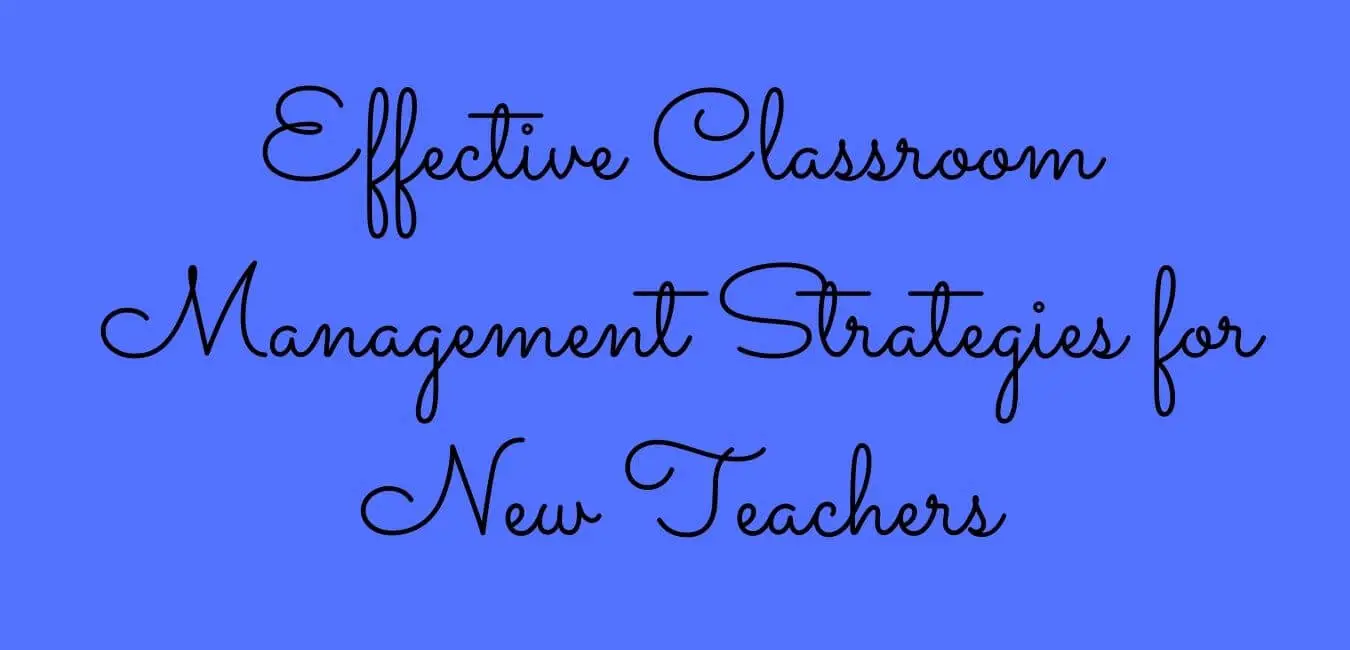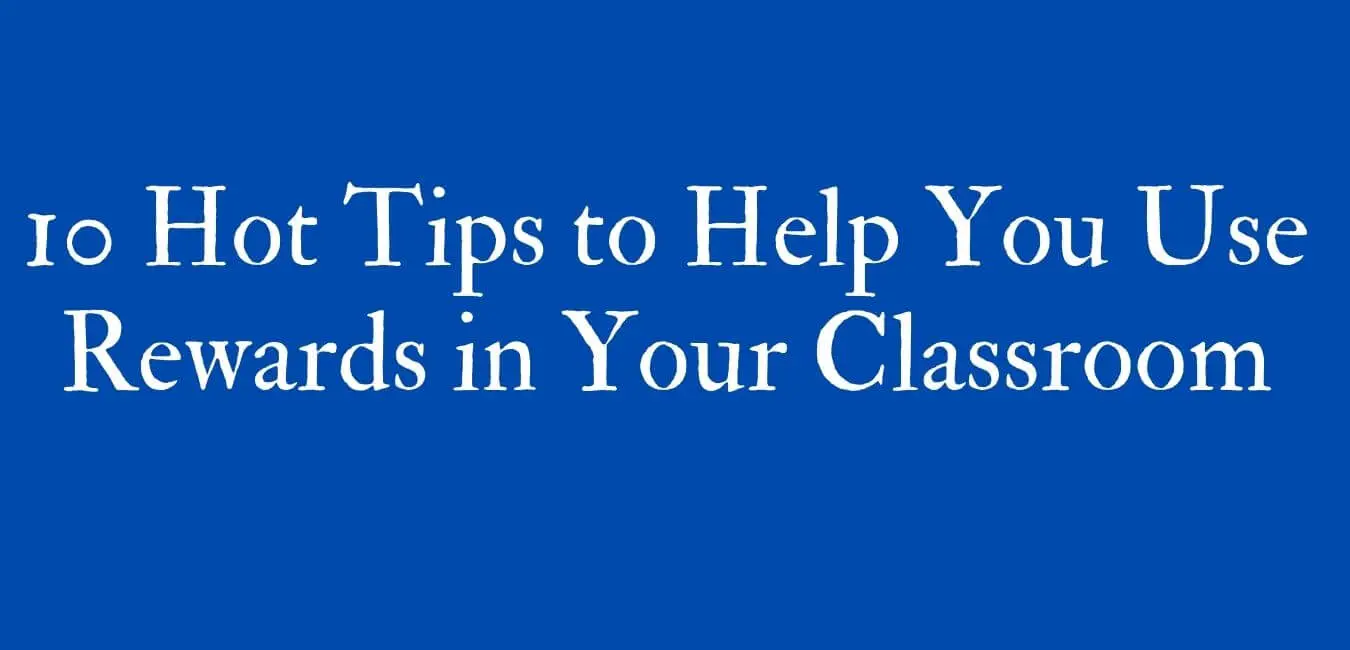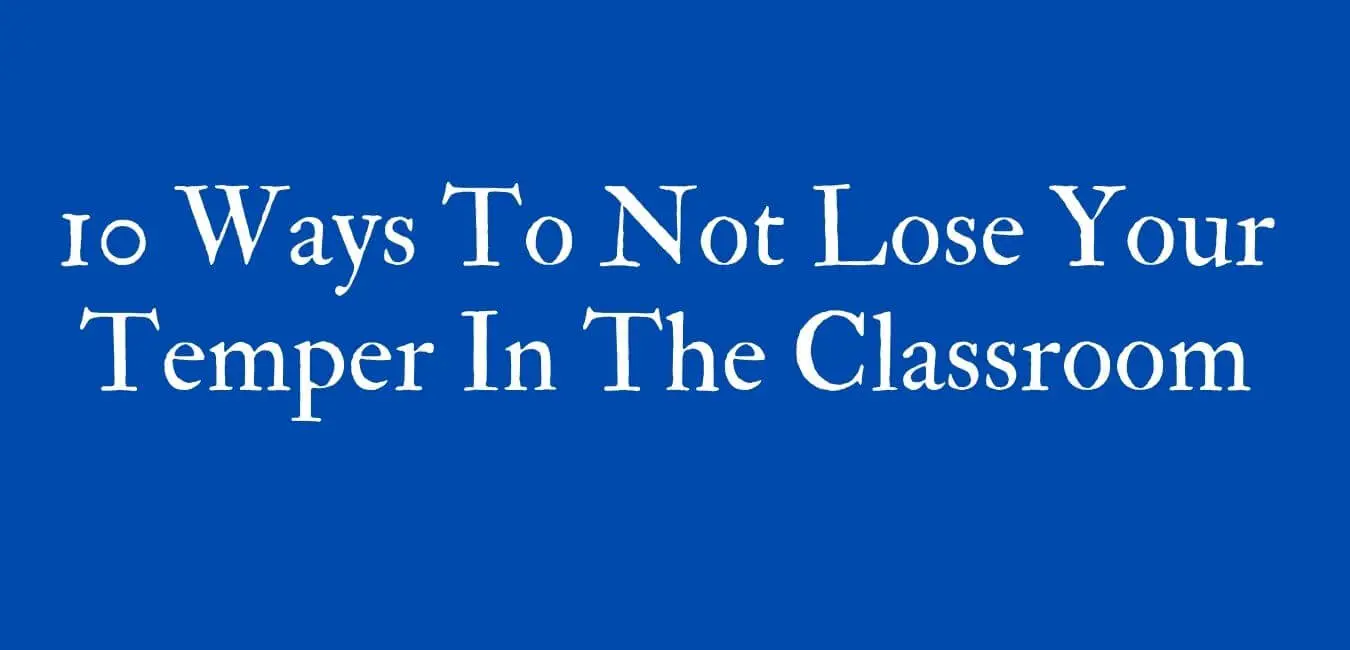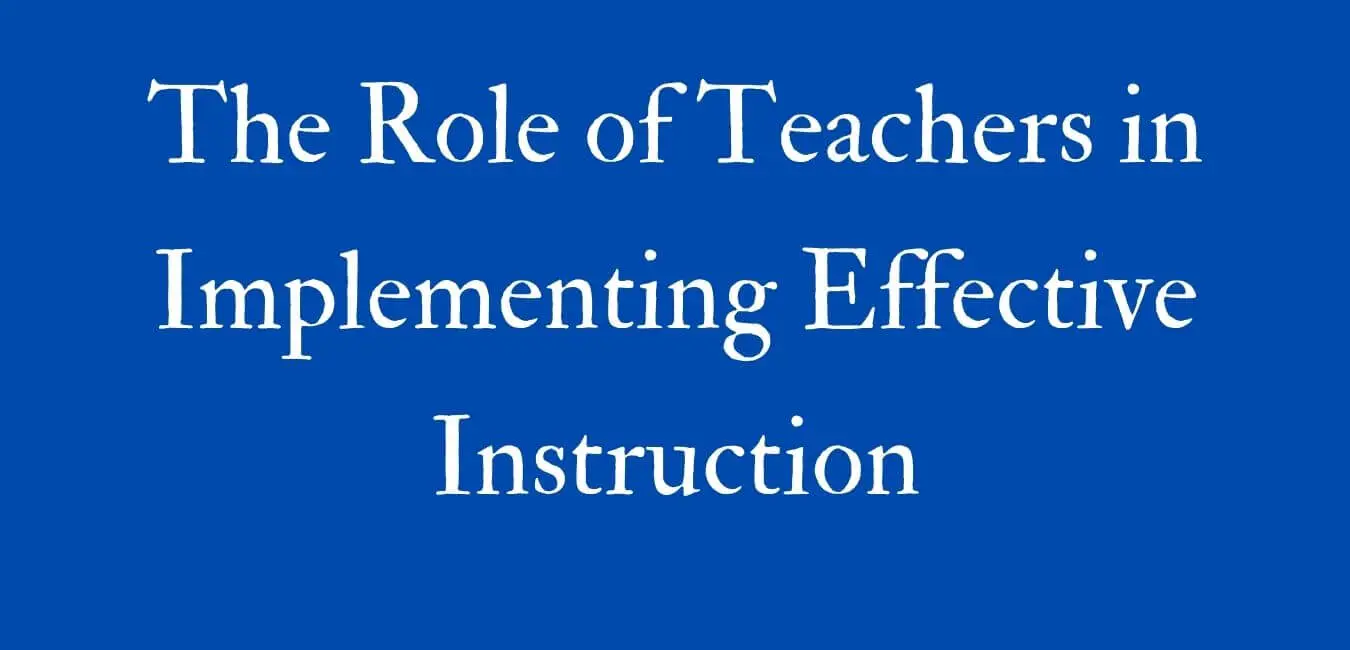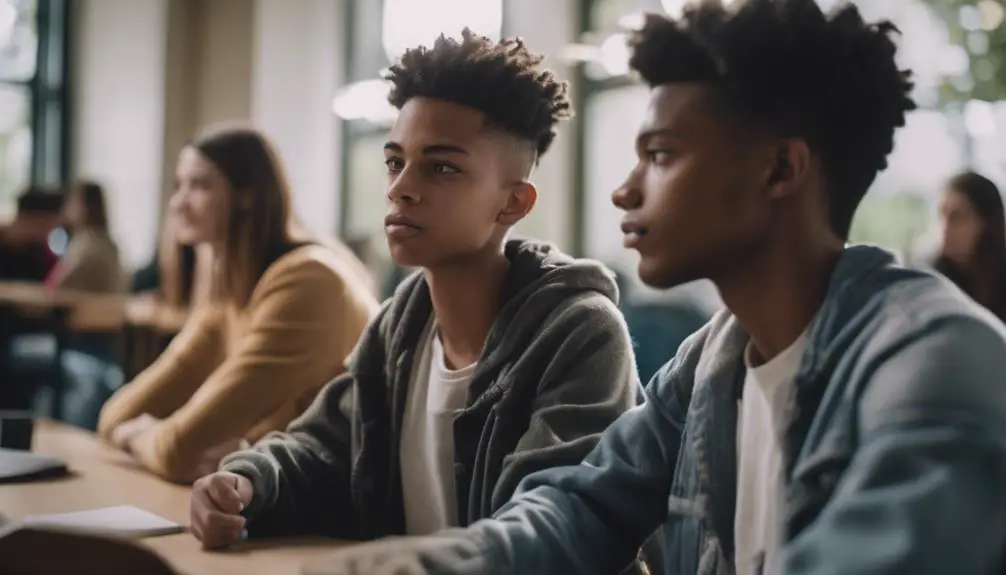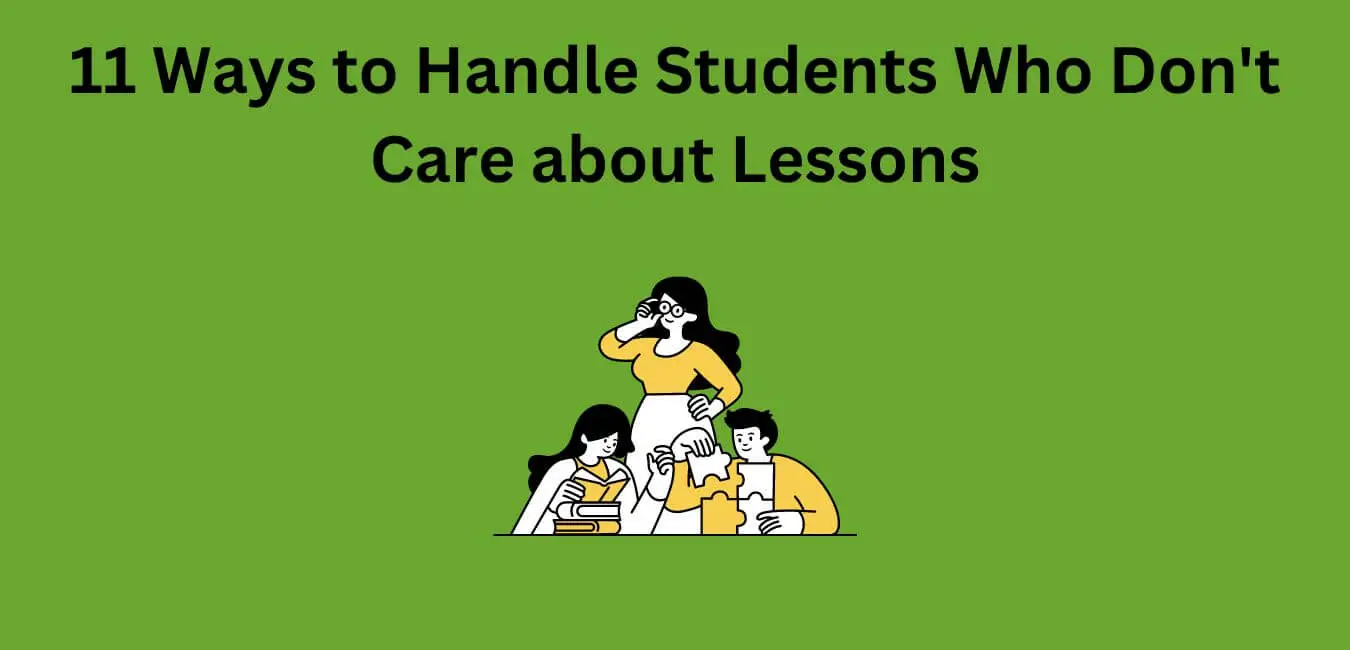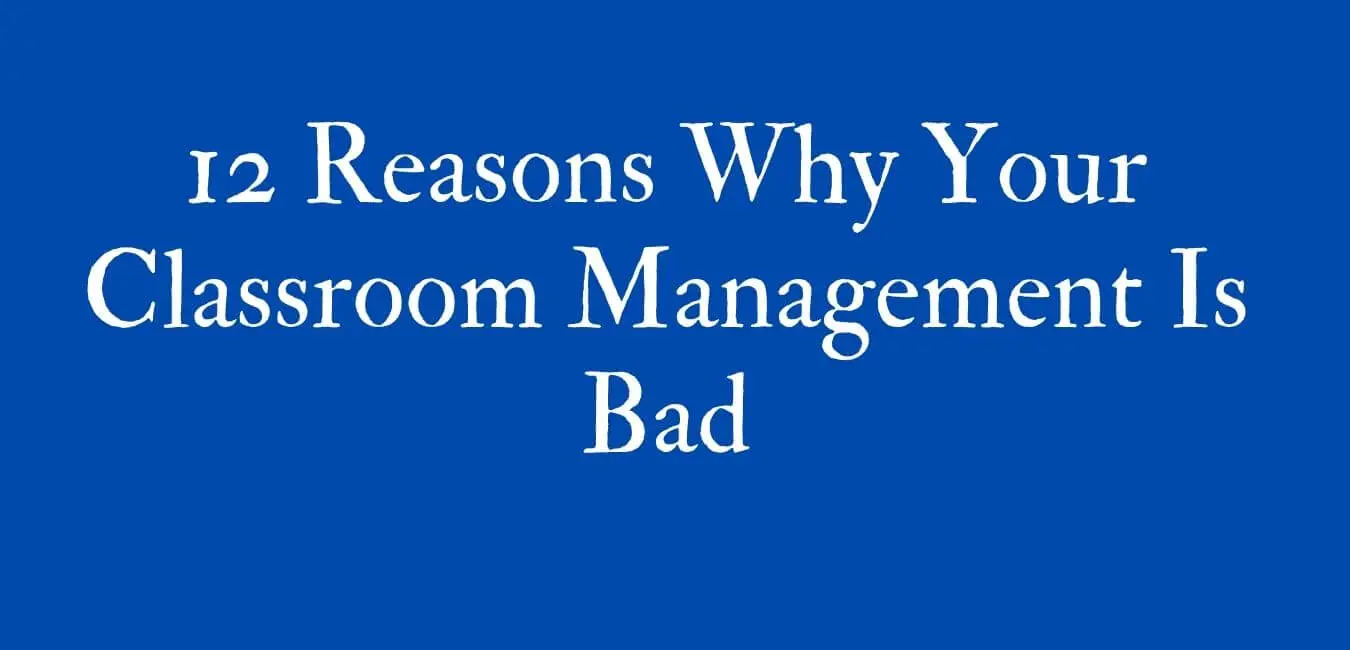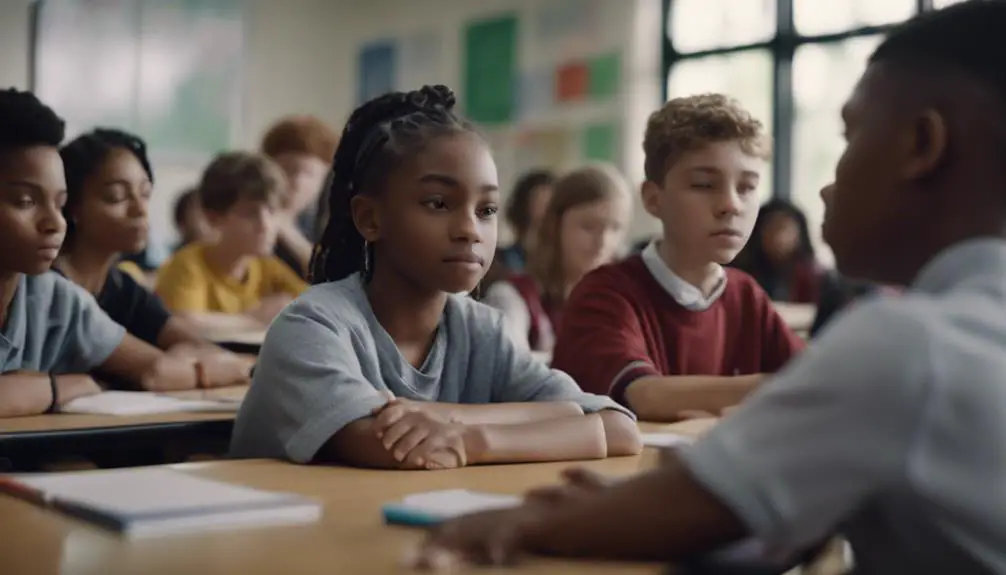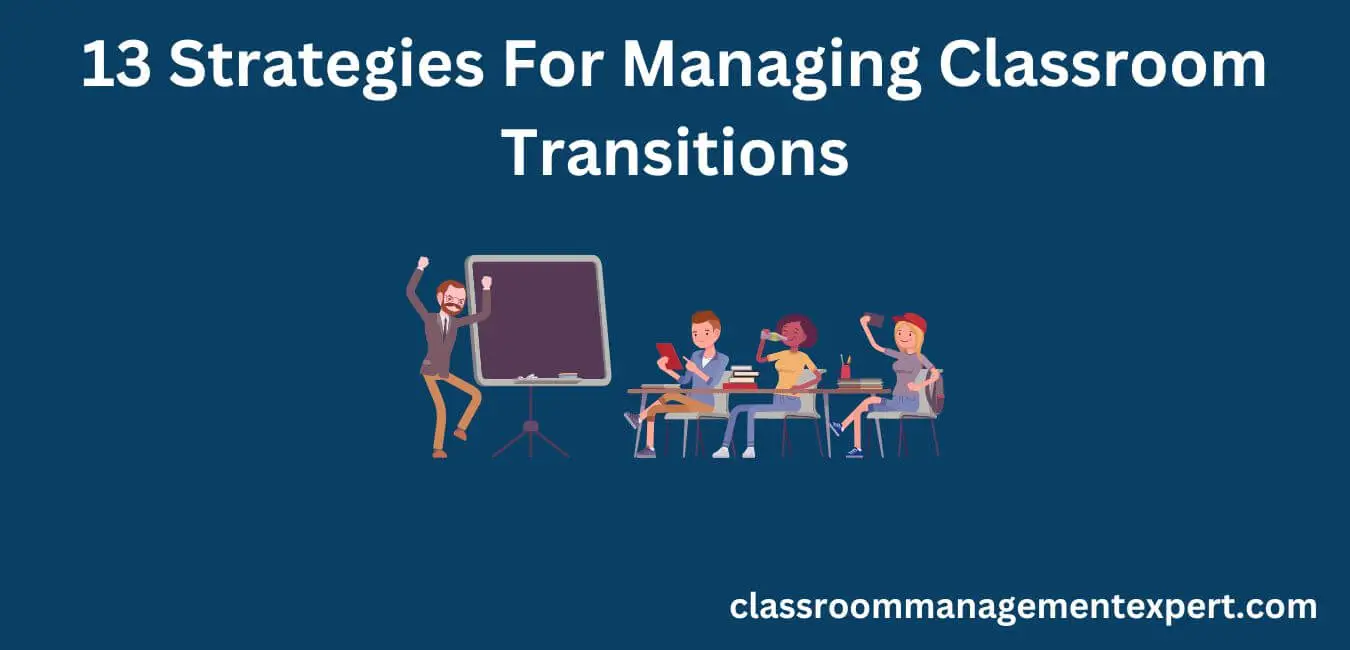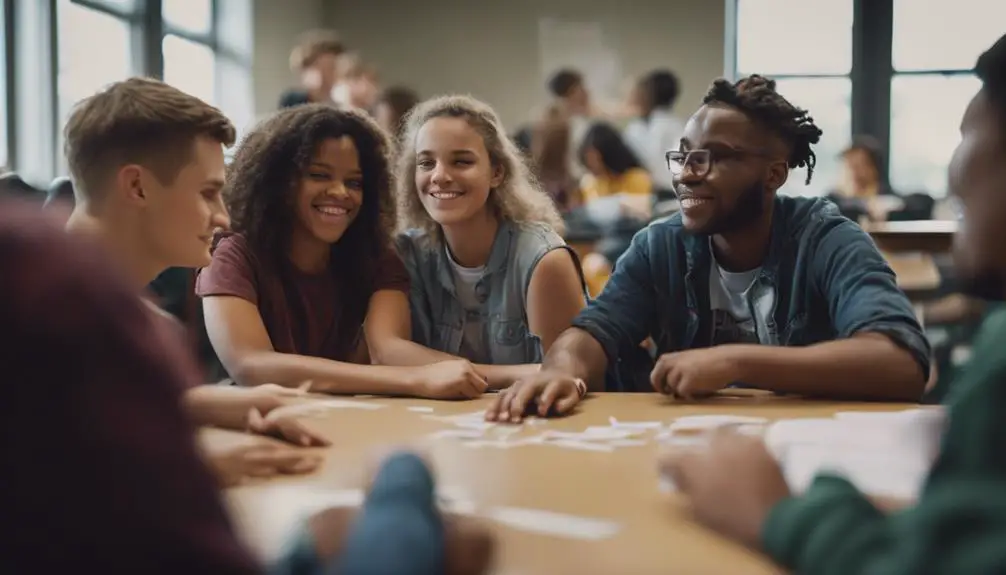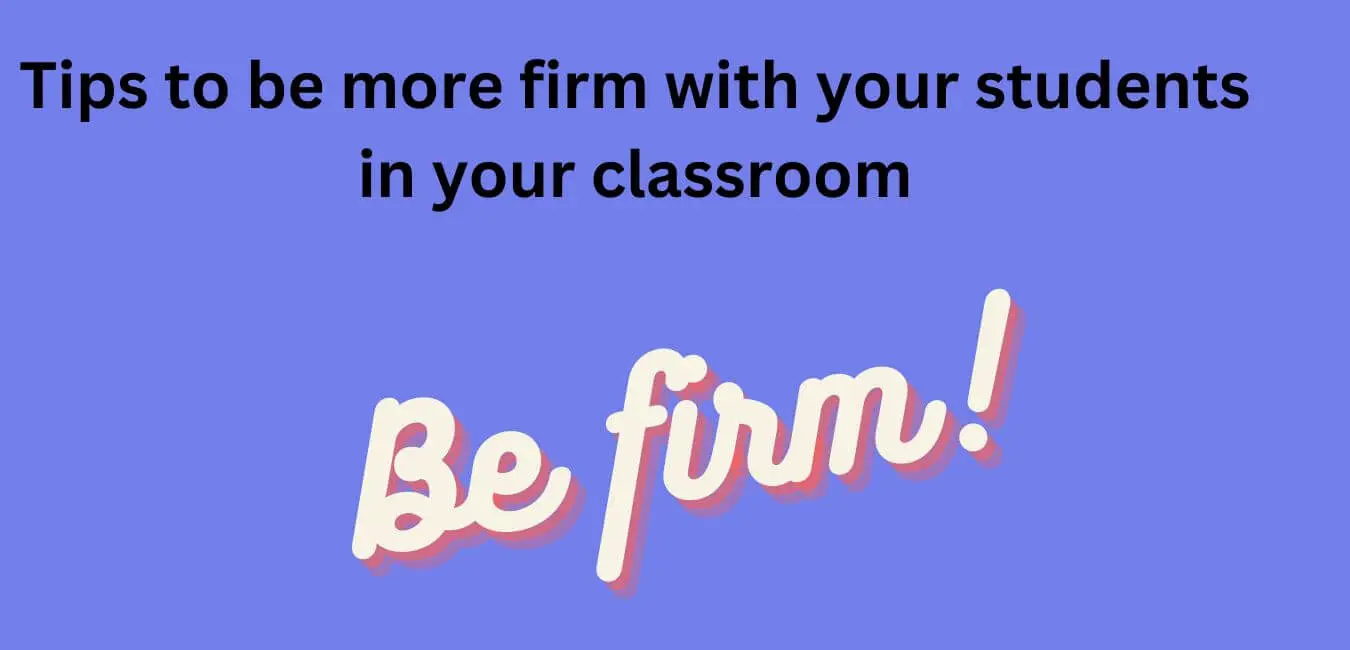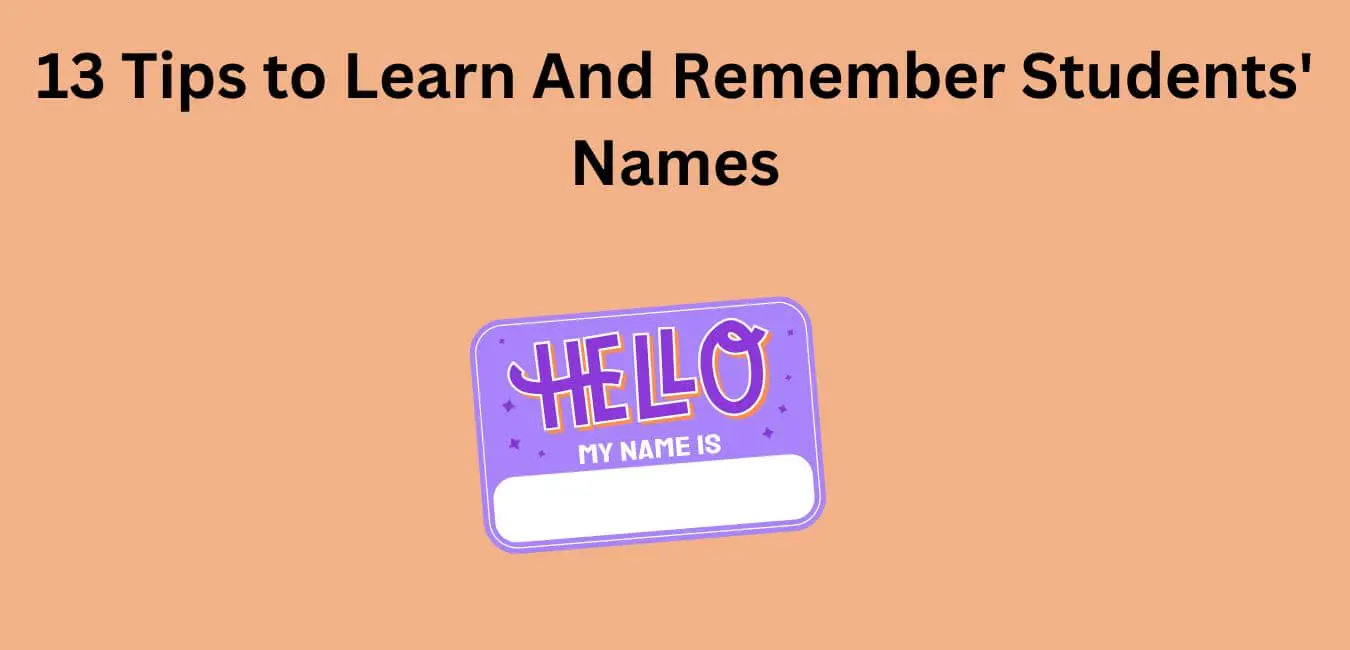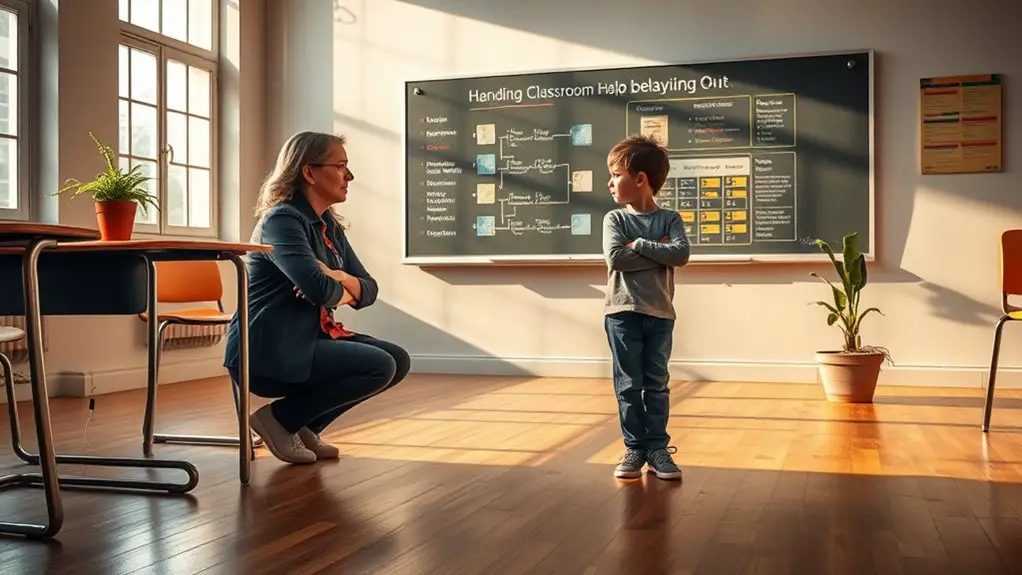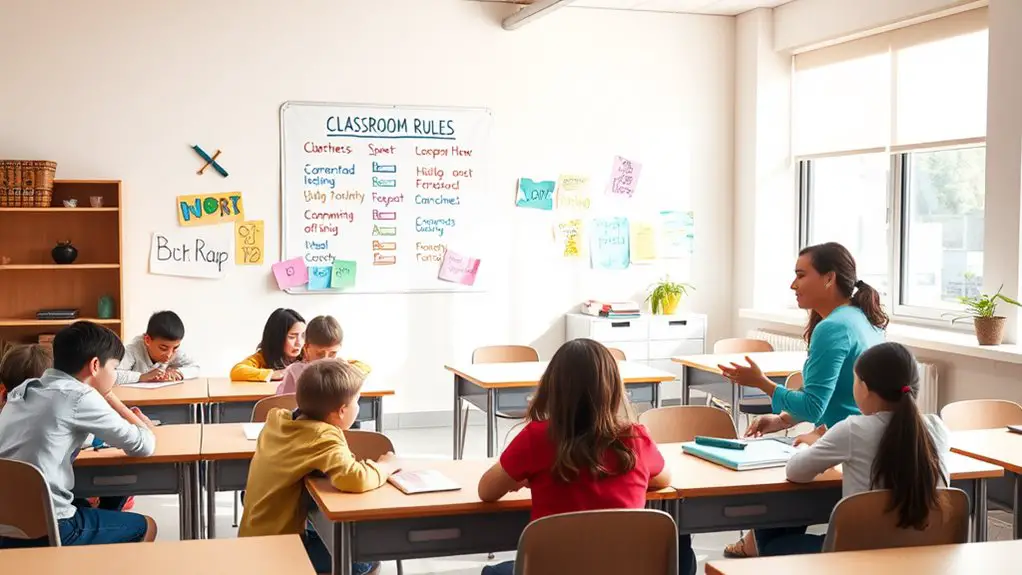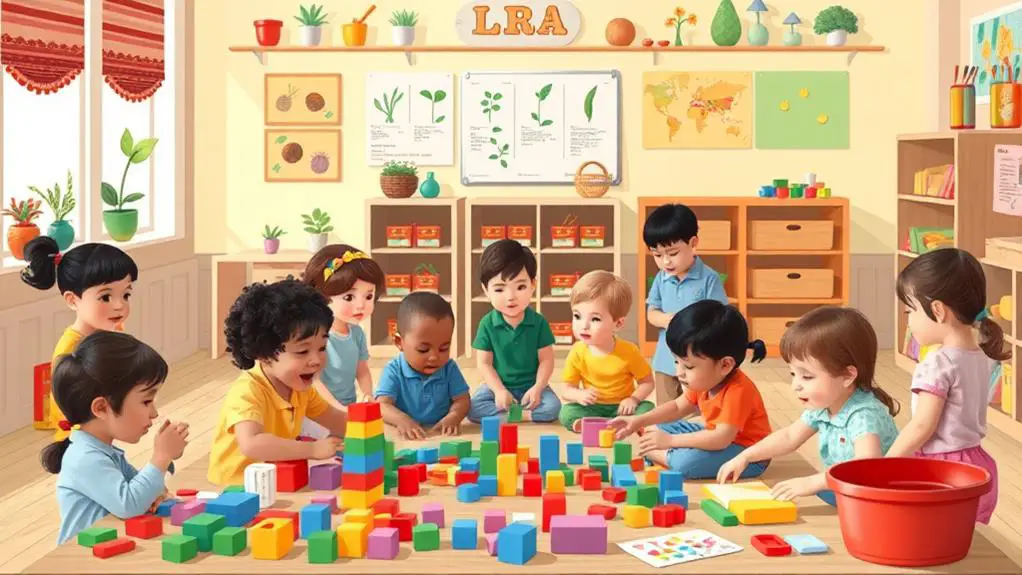As a newbie teacher, you might be thinking of how to teach and do that effectively. You might also be feeling less confident when you think of how to apply what you have learned in class in the field.
Don’t worry you are not alone in that situation. Every experienced and effective teacher has been in a similar situation at some point in his or her career.
Classroom management, as you have been taught, is key to effective teaching. You might be thinking of how to achieve that.
In this article, I will share with you some techniques that I have found to be effective in classroom management. I hope you will find them helpful.
What Are the Strategies of Classroom Management That Really Work for New Teachers?
Classroom management is extremely important in every teacher’s job. Without that, you struggle to do your as expected. You might want to read this article for more information on its importance it.
Due to that, let’s check out some of the strategies of classroom management below:
1. Philosophy of Education
I always recommend that you develop a philosophy of education even at the time you train as a teacher.
That’s important as you may even be asked to state your philosophy of education in a job interview.
But how will that help you become effective in classroom management?
It serves as a map guiding every aspect of your teaching methods. And classroom management is part of that.
Your philosophy of education may be congruent with that of your school if any. That’ll help you when implementing your techniques and strategies.
Check out these posts on the philosophy of education and how to develop one.
With it, you select the best classroom management strategies that resonate with your philosophy and beliefs of education. That gives you internal motivation to see through your strategies. This means being consistent in managing students’ behavior.
2. Classroom Management Philosophy
Classroom management philosophy consists of your beliefs, values, and principles regarding how student behavior must be managed.
That’s critical because it helps you to try, find, and stick to behavior management techniques that work for you.
Without that, you are exposed to applying contradictory or conflicting strategies to manage behavior.
Also, you will likely implement aspects of various classroom management models without fully implementing any fully. That can make it ineffective.
Refer to this post for more information on classroom management philosophy.
3. Strong and Positive Relationships are Key
Bonding well with students helps a lot in managing their behavior.
So you must work hard to develop strong and positive relationships with your students.
You are most likely going to experience good behavior among students you have a great relationship with.
Having great relationships with your students will help you in influencing them to behave appropriately.
Also, it improves communication between you and your students thereby allowing them to open up to issues bothering them. This allows you to look for solutions to help them.
Refer to this article for more information on how to build great relationships with your students.
4. Use Behavioral Contracts
To become effective in managing the behavior of students, behavioral contracts are key. Behavior contracts are contracts that you make with students to help them behave appropriately.
It contains both appropriate and inappropriate with their corresponding consequences (positive for appropriate behaviors and negative for inappropriate behavior).
It is constructed in collaboration with your students. They help you choose both positive and negative reinforcement methods for respective behaviors.
The behavioral contract will help you manage students’ behavior together with them. Because students are engaged in the process of developing the contract, they feel responsible and accountable for it. Find out more information on how to create behavior contracts for your students.
5. Make Working Classroom Rules
Classroom rules are as important to you and your students as laws are to every society.
Therefore, you must have classroom rules to guide behavior in your class.
They are important because it states clearly and concisely the attitudes or behavior that are acceptable and unacceptable.
It serves as a guide for behavior in the classroom.
Also, they allow you to be consistent when rewarding or issuing negative consequences for misbehavior.
Check out these articles for more information on why classroom rules are important and how to create them.
6. Develop a Classroom Management Plan
Every teacher must have a classroom management plan.
It is important for you as it provides you with the necessary tools and techniques to manage behavior in the classroom.
It also includes pre-planned strategies that you can easily access when you need them. You will not panic when implementing them.
You become consistent when dealing with misbehavior as they occur.
Therefore, you must work hard to create one. Refer to this article for more information on what to include in your classroom management plan.
7. Use Time Effectively
Time management is a critical part of effective classroom management.
Managing your time efficiently at a personal level is imperative for your success in managing students’ behavior.
Proper time management allows you to get more time to plan your lessons effectively. That’s necessary because you plan for possible interruptions and misbehavior during the lesson. With that, you prepare beforehand on how to deal with them. This allows you to prevent problem behavior before it occurs.
Another way it is useful is that you better use your time when you get the attention of students in your class. That is, it is always essential to make efficient use of time during lessons. This helps you avoid misbehavior.
For example, most students engage in problem behavior because they feel they are not anything or even bored. This is often due to the case that the teacher doesn’t utilize their time well and get students working.
Therefore, efficient use of time will be a critical part of your classroom management efforts and you must work hard to master it.
You may find out more information on ways to manage your time efficiently here.
8. Develop Homework Routine
As part of managing your classroom, you must deal with students’ behaviors towards homework. You may be asking why that is part of classroom management.
This is important because homework activities are part of your classroom procedures and routines. Due to that, you must manage homework effectively.
Homework instills in students the quality of accountability. That is necessary because it allows them to understand that they will always be responsible for their actions, whether good or bad. With that, students learn to put up appropriate behaviors.
It further develops students’ confidence and self-esteem. When students submit their homework, they develop a feeling of achievement and satisfaction. It also makes them feel they are part of their classroom. All these help develop their confidence and self-esteem.
You must, therefore, develop a clear and effective homework routine to help you become effective in teaching. Check here for some tips to help you deal with students who don’t do their homework.
9. Manage Transitions Effectively
Transitions are critical parts of the teachers’ job in the classroom. They involve the process of getting students to stop doing one activity and move to another.
Your ability to manage transitions will help improve your classroom management efforts.
It is one of the most difficult parts of classroom management for some teachers, especially among those who teach lower-grade students.
It is often difficult to get some students to transition to other activities, especially if they enjoy the previous activity.
Managing transition appropriately and efficiently is useful in preventing misbehavior.
Read here for tips on how to manage transitions efficiently.
10. Effective Commands
As a teacher, one of the things you will likely do much in the classroom is issuing commands. Please, don’t understand “command” in a negative way.
Teaching involves the conversation of issuing instructions, feedback, responses, and many other forms of conversation.
These are often in the form of commands, questions, answers, explanations, and requests.
Therefore, you must be able to issue commands efficiently.
For example, if a student is found playing with a toy car while his or her colleagues are busy working on an activity. In this situation, you will likely issue a command to get the student to stop playing with the toy car.
In this situation, you must issue the command effectively, for your students to obey.
This post can help you understand and issue commands effectively.
11. Model Good Behavior
Modeling plays an important role in education.
It involves demonstrating what constitutes good behavior. That’s critical in developing classroom rules, procedures, standards, and routines.
After developing classroom rules, procedures, and routines model them for everyone to understand.
Modeling is a great way of explaining and teaching complex situations.
Modeling improves students’ comprehension. One of the major causes of classroom misbehavior is a lack of understanding of what is being taught in class.
Make sure you use modeling to your advantage to facilitate the understanding of students and to help you manage your lessons effectively.
12. Encouragement is Great
Encouragement is considered a more sustainable alternative to positive reinforcement that you should use to get the best out of your students. Encouragement is the best technique to use when someone has done something not worthy of great credit. It helps motivate the person.
It also helps teachers to correct the mistakes of students in the best way. Encouragement makes students understand that making mistakes is part of every learning process. That allows them to correct their mistakes without losing themselves.
Using encouragement in motivating students helps students know the value in themselves. That is, it allows students to see the positive sides of themselves. This allows them to take more risks, explore more ideas, and put up more positive behavior.
Due to that, you must use encouragement as one of the strategies to get students to behave well and as expected. Get some tips on how to use encouragement as a classroom management technique here.
13. Use Non-Verbal Communication Too
Effective communication is essential for better classroom management. Both verbal and non-verbal communication are a great part of student-teacher interactions.
Non-verbal communication such as facial expression, movements, signals, tone of voice, volume of voice, body language, posture, eye contact, touch, and space are great tools that you can use to aid the management of students’ behavior.
Don’t understand the usefulness of non-verbal communication techniques and means to getting students to behave well in class.
For example, my students understand that they need to stop whatever they are doing and pay attention whenever I standstill without any movement. Whenever I stand that way, it takes them between one to two minutes to give me their attention.
14. Be Consistent
Classroom management plans and behavior push you to be consistent with the behavior management techniques you use. So work hard to become consistent with actions regarding behavior.
Another point to note is that you should treat everyone equally. That means being consistent with how you treat each student if they behave appropriately or inappropriately.
I know it’s difficult to consistently treat everyone equally. This is because you will like some students more than others. Despite this, you still have to try your best to achieve that. Else, you will lose the respect of your students. You will therefore lose control of your class as a whole.
Please, find more information on how to become consistent in the classroom here.
Being consistent in dealing with behavior problems as well as students is another great strategy that you learn to use in your classroom.
First of all, you have to be consistent in the strategies or techniques you apply to behaviors. That is critical because students will be aware of the various consequences of each behavior. Therefore, they will not be taken by surprise when you implement one consequence or another.
One best way of remaining consistent in your decisions regarding behaviors is to develop classroom management plans and behavior contracts.
15. Give Effective Warnings
Warnings are part of the interaction between the teacher and the students.
As teachers, we are sometimes faced with situations where we have to issue warnings to students for being defiant or oppositional.
When you find yourself in that situation, you must give effective warnings to the students involved.
If your warning is ineffective or you issue it ineffectively, you will have problems getting students to behave appropriately.
For example, a student who engages in misbehavior must be warned to stop the misbehavior.
You might want to check out our article on how to give effective warnings in class.
16. Effective Temper Tantrums Management
Temper tantrums have been the cause of many problems for teachers in the classroom. A temper tantrum occurs when a student starts to continuously scream, yell, wail, and carry on, and doesn’t stop after a short period but carries on long enough to disrupt your ability to continue teaching your class.
In those instances, you are required to intervene to make sure the student calms down and doesn’t pose a threat to other students, yourself, or him/herself.
For example, throwing to the floor a pencil that he happened to have in his hand or kicking his desk (but not toppling it) while he is walking away from it. Instead, let’s consider temper tantrums as including more serious physical violence, such as throwing something at you, throwing something across the room, turning over a desk, breaking an object, hitting you, or thrashing about in a fit of anger.
Your ability to manage these circumstances in your classroom is critical to your success in classroom management. Remember, these behaviors will occur from time to time, and you must be prepared to deal with them appropriately. Find some information on how to manage those situations here.
Time-out has been the best method used by most teachers when dealing with temper tantrums. Of course, not everyone has found that effective. This is large because some people don’t use time-out effectively. Check out our article on how to use time-out effectively in your classroom.
17. Manage Out-Of-Class Setting Behaviors
Students’ behavior is determined partly by the environment they find themselves. The environment is made up of the classroom, school, family, and societal settings.
As a teacher, you can only manage and/or control, to a large extent, your students’ classroom and school settings. So, you must try as much as possible to manage students’ out-of-class setting behaviors well.
This is because, outside of their classroom environment, students often exhibit more problems with self-control. The reasons for this are complex, but some factors are important to keep in mind.
First, a different setting does not follow the same patterns of behaviors and consequences that your student has become used to in your classroom, so he may be less likely to know what is expected.
In addition, many out-of-class settings inherently have less structure. For example, on the playground or in the cafeteria, there is less supervision and guidance.
Another important contributor is the increased stimulation that students experience in low-structure settings. On the playground, kids are running all around, talking and bumping into each other. This stimulates students to behave roughly and out of control.
Remember, most of the happenings outside the classroom will follow them to the classroom. This often may yield problem behavior. So, you must work hard to deal with out-of-class setting behaviors.
18. Collaborate A Lot
Try to collaborate with other teachers to manage the behavior of students. This is necessary especially when you feel you need help.
The experienced teachers in your midst can help you a lot when you get in touch with them for ideas on how to improve classroom management.
Also, make use of your school’s counselor if you need them. If your school has a counselor, engage him or her to manage behavior that is repetitive and chronic.
For example, you need him or her when dealing with students with autism, ADHD, ADD, and other psychological issues.
Just remember you can’t do it alone, therefore get help when you need it. Check here for some tips on how to collaborate with others.
19. Manage Interruptions Effectively
This might be related to other strategies mentioned already. However, I still have to emphasize the importance of this point.
You need to always manage interruptions appropriately and efficiently. This is because interruptions can mar the beauty and effectiveness of your lessons.
Imagine having a great lesson but all of a sudden a student starts to whisper to others. If that is left unattended, be sure he or she will succeed in getting the attention of the other students.
In that situation, the attention of the students will be diverted and that will diminish the understanding of students.
If you allow the interruptions to continue, all your lessons will suffer in the future. That is because the students will think you approve of whispering among themselves during lessons.
Due to that, you must work hard to deal with interruptions appropriately.
Find some tips on how to deal with interruptions in your class.
20. Don’t Forget about Culture
Beware of the culture of your students. Culture plays an important role in the interactions of people.
Culture defines and influences the behaviors and actions that are considered appropriate or otherwise.
You are going to have diverse cultures in your classroom, especially in today’s world. Because of globalization, your classroom may be full of students from different countries, regions, races, ethnicities, and religions.
In light of that, you must work well to balance your classroom setting without compromising on anyone’s beliefs, values, and norms.
Treat everyone equally but be mindful of everyone’s background. Don’t make a rule or routine that undermines anyone’s culture.
Or else you will face behavior problems in your classroom. This will be a result of losing your respect. Read this post to understand the importance of culture in the classroom.
21. Use Positive Discipline
Always strive to utilize positive discipline when dealing with your students.
Positive discipline is a discipline type that relies on the belief that people behave appropriately when there’s mutual respect and trust among them.
That suggests that all your classroom management efforts must be respectful and promote responsibility among everyone.
It is contrary to negative discipline which involves angry and violent disciplinary procedures. It involves a full process of discipline including both positive and negative reinforcements.
With that form of discipline, the process and procedures of discipline are carried out in a respectful manner. The teacher is also kind, motivating, and encouraging to the students.
Find out why positive discipline is important and how to use it.
22. Teach and Teach Effectively
One of the best strategies to manage classrooms is teaching effectively. Teaching effectively gets students to adequately engage in the lesson.
That is they do one activity and transition to another and another continuously. This doesn’t spare some time for students to engage in misbehavior.
Teachers who are well prepared for their lessons teach them effectively and therefore face minimum interruptions and misbehavior in their classrooms.
So, you must always prepare well for your lessons. That means getting all the materials and resources necessary for the lesson to be successful and understood.
If you are less prepared, you are likely to run out of activities and materials allowing students to sit idle or not do much for their level. That makes them feel bored and gives them time to think of engaging themselves with other things or activities. That, therefore, disrupts you and or other students.
Don’t leave anything to chance. Just be well prepared if you want to reduce disruptions and misbehavior.
23. Consistent Consequences for Behavior
Establishing consistent consequences for behavior is essential for new teachers to effectively manage their classrooms. When students know that there are clear and consistent consequences for their actions, it helps create a positive and structured learning environment.
Consistency in consequences means that every time a student engages in a particular behavior, they can expect the same outcome. This predictability helps students understand the boundaries and expectations of the classroom. It also helps new teachers establish their authority and maintain control over the classroom.
Consistent consequences should be fair and appropriate for the behavior being addressed. By consistently enforcing consequences, new teachers can deter negative behaviors and promote positive ones, leading to a more productive and harmonious classroom environment.
24. Establish Routines and Procedures
As a new teacher, you can establish effective classroom management by implementing clear and consistent routines and procedures. By setting up these routines and procedures, you create a structured and organized learning environment that promotes student engagement and reduces behavior disruptions. Here is a table outlining some key routines and procedures that you can establish in your classroom:
| Routines | Procedures |
|---|---|
| Morning Routine | Attendance and Announcements |
| Transition Routine | Signal and Expectations |
| Classroom Cleanup Routine | Assigning Responsibilities |
Having a morning routine helps students start their day on the right foot, while a transition routine smooths the flow between activities. A classroom cleanup routine teaches responsibility and maintains a clean and tidy learning space. Remember to clearly communicate these routines and procedures to your students and consistently enforce them to establish a positive classroom culture.
25. Use Positive Reinforcement
To effectively manage your classroom as a new teacher, utilize positive reinforcement strategies.
Positive reinforcement involves acknowledging and rewarding desired behaviors, which helps create a positive and motivating environment for your students. When you praise or reward students for their efforts, it reinforces their good behavior and encourages them to continue demonstrating it.
This can be as simple as giving verbal praise, offering small incentives or rewards, or providing opportunities for special privileges. By using positive reinforcement, you not only boost students’ self-esteem and confidence but also foster a sense of belonging and engagement in the classroom.
It’s important to remember that positive reinforcement should be specific, immediate, and consistent, ensuring that students understand exactly what behavior is being reinforced.
26. Set a Positive Tone
Create a welcoming atmosphere in your classroom by fostering a positive tone. Setting a positive tone in your classroom can greatly impact the learning environment and student engagement. By establishing a positive tone, you create a safe and supportive space for students to learn and grow. Here are some strategies you can implement to set a positive tone:
| Strategies | Benefits |
|---|---|
| Greet students warmly | Makes students feel valued and acknowledged |
| Use positive language and gestures | Encourages a positive mindset |
| Celebrate student achievements | Boosts self-esteem and motivation |
| Establish clear expectations and rules | Sets a structured and respectful environment |
| Encourage collaboration and inclusivity | Fosters a sense of belonging and teamwork |
27. Provide Clear Directions
To effectively manage your classroom, ensure that you provide clear directions to your students. This is crucial for maintaining order and maximizing learning opportunities. Here are four strategies to help you provide clear directions:
- Be concise: Keep your instructions short and to the point. Avoid using unnecessary words or phrases that may confuse students.
- Use visual aids: Incorporate visual cues such as charts, diagrams, or pictures to support your verbal instructions. This can enhance understanding and reinforce key concepts.
- Model expectations: Show students what you expect by demonstrating the desired behavior or task. This helps them understand what’s required and reduces confusion.
- Provide opportunities for clarification: Encourage students to ask questions if they’re unsure about the directions. This allows you to address any misunderstandings and ensure everyone is on the same page.
28. Use Visual Aids
Use visual aids to enhance student understanding and engagement in the classroom.
Visual aids, such as charts, graphs, diagrams, and images, can help students grasp complex concepts more easily. When you incorporate visual elements into your lessons, you provide a visual representation of the information being taught, making it more accessible to students with different learning styles.
Visual aids also serve as effective tools for capturing students’ attention and maintaining their focus throughout the lesson. By using visual aids, you can create a dynamic and interactive learning environment that promotes active participation and deeper comprehension.
Additionally, visual aids can make abstract or unfamiliar topics more relatable and concrete, helping students make connections and retain information. So, whether you’re explaining a scientific process or discussing historical events, remember to utilize visual aids to enhance student learning and engagement.
29. Use Variety in Teaching
How can you incorporate variety in your teaching to effectively manage your classroom as a new teacher? Here are four strategies to help you bring variety into your teaching:
- Use different instructional methods: Incorporate a mix of lectures, discussions, group work, and hands-on activities to engage students and cater to different learning styles.
- Integrate technology: Utilize educational apps, online resources, and interactive tools to enhance your lessons and make them more engaging and interactive for your students.
- Vary your teaching materials: Include a variety of resources such as textbooks, articles, videos, and visual aids to provide different perspectives and keep students interested and motivated.
- Incorporate real-world examples: Relate your lessons to real-life situations and current events to make the content more relevant and meaningful to your students.
30. Address Individual Needs
Ensure personalized support for each student by implementing strategies that address their individual needs effectively as a new teacher. One effective way to address individual needs is by conducting regular assessments to identify each student’s strengths and weaknesses.
This will help you tailor your teaching approach and materials to meet their specific learning styles and abilities. Additionally, providing students with opportunities for choice and autonomy in their learning can also help address their individual needs.
This can be done by offering different options for assignments or allowing them to choose topics for projects. Another strategy is to establish open lines of communication with students and their families, as this will allow you to gather important information about their individual needs and make necessary adjustments to your teaching.
| Strategies to Address Individual Needs | Benefits |
|---|---|
| Regular assessments to identify strengths and weaknesses | Tailor teaching approach |
| Offer choice and autonomy in learning | Cater to individual learning styles |
| Establish open lines of communication with students and families | Gather important information for adjustments |
31. Encourage Student Participation
Encourage student participation by actively involving them in classroom activities and discussions. Here are four effective strategies to help you achieve this:
- Create a safe and supportive environment: Foster a classroom culture where students feel comfortable expressing their opinions and ideas without fear of judgment. Encourage collaboration and respect among peers.
- Use engaging teaching methods: Incorporate interactive activities such as group work, role-playing, and hands-on experiments to capture students’ attention and make learning more enjoyable. This will encourage them to actively participate in class.
- Provide opportunities for student choice: Allow students to have a say in their learning by giving them options for projects, topics, or assignments. This autonomy will motivate them to engage and take ownership of their education.
- Give meaningful feedback: Acknowledge and appreciate students’ contributions, whether it’s through praise, constructive criticism, or asking follow-up questions. This feedback will validate their efforts and encourage continued participation.
32. Foster a Supportive Environment
Continue fostering a supportive environment in your classroom by consistently reinforcing positive behavior and creating a sense of belonging among your students. Encouraging a supportive atmosphere helps students feel safe and valued, which in turn enhances their engagement and motivation to learn.
One way to achieve this is by establishing clear expectations and consistently praising students for meeting them. Recognize their efforts and achievements, both big and small, to reinforce positive behavior.
Additionally, create opportunities for collaboration and teamwork, allowing students to work together and support each other. Encourage open communication and active listening, so that all students feel heard and understood.
33. Teach Problem-Solving Skills
Develop students’ problem-solving skills by incorporating collaborative activities and real-world scenarios into your lessons.
By engaging students in hands-on tasks that require critical thinking and decision-making, you can help them develop the necessary skills to tackle challenges and find innovative solutions.
Collaborative activities such as group projects and discussions promote teamwork and communication, allowing students to learn from each other’s perspectives and ideas.
Additionally, incorporating real-world scenarios into your lessons helps students understand how problem-solving skills can be applied in practical situations.
To further enhance their problem-solving abilities, consider using the following strategies:
| Strategies | Description | Example |
|---|---|---|
| Brainstorming | Encourage students to generate a variety of ideas and solutions to a given problem or scenario. This technique promotes creativity and fosters a collaborative environment. | Brainstorming different ways to reduce waste in the school cafeteria. |
| Case studies | Present real or fictional scenarios to students, allowing them to analyze and propose solutions based on their understanding of the subject matter. This approach enhances critical thinking and problem-solving skills. | Analyzing a case study on environmental pollution and suggesting measures to mitigate its effects. |
| Role-playing | Assign roles to students and have them act out different scenarios. This activity helps students gain a deeper understanding of different perspectives and encourages them to come up with innovative solutions. | Role-playing a negotiation between two countries to resolve a conflict peacefully. |
34. Use Cooperative Learning Activities
Incorporate cooperative learning activities to foster a collaborative and engaging classroom environment, allowing students to build upon their problem-solving skills. Here are four effective strategies to implement cooperative learning in your classroom:
- Jigsaw Method: Divide students into small groups and assign each group a different topic. Each student becomes an expert in their topic and then shares their knowledge with their group members.
- Think-Pair-Share: Pose a question or problem to the class and give students time to think individually. Then, have them pair up with a partner to discuss their thoughts. Finally, facilitate a whole class discussion where students share their ideas.
- Group Projects: Assign students to work together on projects that require collaboration and problem-solving. Encourage them to divide tasks, communicate effectively, and support each other throughout the process.
- Peer Tutoring: Pair students of different abilities together, allowing the stronger student to tutor the struggling student. This promotes cooperation, empathy, and a deeper understanding of the subject matter.
36. Use Technology Effectively
To effectively manage your classroom, utilize technology as a means of enhancing student engagement and facilitating their progress in meeting academic goals. Here are four ways you can use technology effectively in your classroom:
- Interactive presentations: Use tools like PowerPoint or Google Slides to create dynamic and engaging presentations that capture students’ attention. Incorporate multimedia elements such as images, videos, and interactive quizzes to make the learning experience more interactive and enjoyable.
- Online collaboration: Utilize platforms like Google Classroom or Microsoft Teams to promote collaboration among students. Create virtual discussion boards, group projects, and shared documents to foster teamwork and communication skills.
- Digital assessments: Replace traditional paper-based assessments with online tools like Kahoot or Quizlet to assess student understanding and track their progress. These platforms offer interactive quizzes and instant feedback, making the assessment process more engaging and efficient.
- Virtual field trips: Take your students on virtual field trips using platforms like Google Expeditions or Skype in the Classroom. Explore different cultures, historical landmarks, or scientific expeditions without leaving the classroom, broadening students’ horizons and making learning more immersive.
37. Promote Active Listening
Promote active listening by encouraging students to:
- Actively engage in classroom discussions and participate in thoughtful dialogue.
- Create a safe and inclusive environment where all students feel comfortable sharing their thoughts and ideas.
- Model active listening yourself, showing that you value and respect their contributions.
- Encourage students to ask questions, seek clarification, and challenge each other’s ideas in a respectful manner.
- Incorporate activities that require active listening, such as group discussions, debates, and presentations.
- Provide opportunities for students to reflect on what they’ve heard and respond to others’ opinions.
- Implement strategies like think-pair-share or class-wide discussions to ensure that every student has a chance to participate.
38. Encourage Self-Regulation Skills
Developing self-regulation skills is crucial for new teachers to effectively manage their classrooms. By encouraging self-regulation skills, you can create a positive and structured learning environment.
Here are four strategies to help you encourage self-regulation skills in your students:
- Teach self-awareness: Help students understand and identify their emotions, thoughts, and behaviors. This will enable them to regulate their actions and make better choices.
- Provide clear expectations: Establish clear rules and expectations for behavior in the classroom. This will help students understand what’s acceptable and guide them toward self-regulation.
- Model self-regulation: Be a positive role model by demonstrating self-regulation skills in your own behavior. This will show students the importance of self-control and inspire them to follow suit.
- Foster problem-solving skills: Encourage students to find solutions to conflicts and challenges independently. This will empower them to take responsibility for their actions and develop their self-regulation abilities.
39. Address Conflicts Promptly
To effectively manage your classroom, promptly address conflicts that arise among your students. Addressing conflicts promptly is crucial for maintaining a positive and productive learning environment. Here are four strategies to help you address conflicts in your classroom:
- Stay calm: It’s important to remain calm and composed when dealing with conflicts. Take a deep breath and approach the situation with a clear mind.
- Listen actively: Give each student involved in the conflict an opportunity to express their thoughts and feelings. Listen attentively without interrupting, and show empathy and understanding.
- Mediate and problem-solve: Encourage students to find common ground and work towards a solution. Guide them through the process of identifying the underlying issues and brainstorming possible solutions.
- Follow up: After the conflict has been resolved, check in with the students involved to ensure that the resolution is working effectively. Provide ongoing support and guidance if needed.
40. Seek Feedback From Students
Continue the conversation by actively seeking feedback from your students on your classroom management strategies.
As a new teacher, it’s important to understand the impact of your approach on the students’ learning experience. By seeking feedback, you can gain valuable insights into what’s working well and what needs improvement.
Create a safe and open environment where students feel comfortable expressing their thoughts and opinions. Encourage them to share their observations and suggestions regarding your classroom management strategies.
This feedback can help you identify areas where you may need to make adjustments, such as implementing new techniques or modifying existing methods. Remember, the goal is to create a positive and productive learning environment.
41. Reflect and Adjust Strategies
As a new teacher seeking feedback from your students on your classroom management strategies, it’s important to reflect on their input and adjust your approach accordingly. Here are four steps to help you reflect and adjust your strategies effectively:
- Analyze student feedback: Take the time to carefully review and analyze the feedback you receive from your students. Look for patterns, common themes, and specific areas for improvement.
- Identify areas for growth: Based on the feedback, identify specific areas of your classroom management strategies that need improvement. This could include issues with communication, organization, or behavior management.
- Set goals: Once you have identified the areas for growth, set clear and measurable goals for yourself. These goals should be focused on improving specific aspects of your classroom management strategies.
- Implement changes: Take action by implementing the necessary changes to address the identified areas for growth. Monitor the impact of these changes and make any necessary adjustments along the way.
What should you not do if you want to manage your classroom effectively as a new teacher?
If you want to effectively manage your classroom as a new teacher, there are several things you should avoid doing.
Avoid Micromanaging Students
Do not hover excessively over students if you want to effectively manage your classroom as a new teacher. Micromanaging can hinder students’ independence and growth, creating a stifling learning environment. Instead, give your students the space and freedom to take responsibility for their own actions.
Here are four things you should avoid doing:
- Constantly checking their work: Trust that your students are capable of completing tasks on their own. Give them clear instructions and set expectations, but resist the urge to constantly monitor their progress.
- Correcting every mistake: While it’s important to provide guidance, correcting every single mistake can be overwhelming for students. Allow them to learn from their errors and encourage independent problem-solving.
- Dictating every step: Give students the opportunity to think critically and make decisions on their own. Avoid spoon-feeding them information and instead, guide them towards finding their own solutions.
- Controlling every aspect: Allow for flexibility and creativity in the classroom. Give students the chance to collaborate, make choices, and take ownership of their learning.
Don’t Ignore Misbehavior Signs
To effectively manage your classroom as a new teacher, it is important that you do not overlook signs of misbehavior. Ignoring these signs can lead to a disruptive and chaotic learning environment. By recognizing and addressing misbehavior early on, you can maintain control and create a positive atmosphere for your students.
Here are some common signs of misbehavior that you should not ignore:
| Signs of Misbehavior | What it May Indicate | Possible Action |
|---|---|---|
| Frequent disruptions | Lack of engagement or understanding | Provide additional support or modify instruction |
| Non-compliance with rules | Disrespect for authority or classmates | Reinforce expectations and consequences |
| Withdrawal or disengagement | Emotional or social issues | Offer support or referral to a counselor |
| Aggressive behavior | Anger or frustration | Address the behavior and provide appropriate consequences |
Limit Excessive Rule-Making
Excessive rule-making can hinder your ability as a new teacher to effectively manage your classroom and create a positive learning environment. It’s important to strike a balance between having necessary rules and overwhelming your students with too many regulations. Here are four things you should avoid if you want to manage your classroom effectively:
- Don’t make rules for every little thing. Having too many rules can confuse and frustrate your students, leading to a disruptive classroom environment.
- Avoid rules that are too rigid. Flexibility is key when managing a classroom. Your students need room to express themselves and learn from their mistakes.
- Don’t impose rules without providing explanations. When students understand the purpose behind the rules, they’re more likely to follow them willingly.
- Avoid making rules that are unrealistic or unattainable. Setting unrealistic expectations can lead to frustration and demotivation among your students.
Avoid Favoritism in Class
- Avoid showing favoritism in your classroom if you want to effectively manage and create a fair learning environment as a new teacher. Treating all students equally is essential for building trust and respect among your students.
It’s important to avoid singling out certain students for special treatment or privileges, as this can create a sense of unfairness and resentment among the rest of the class. Avoid giving preferential treatment to certain students based on their academic performance, social status, or personal connections.
Instead, strive to create a positive and inclusive classroom environment where all students feel valued and supported. By treating all students fairly and consistently, you’ll establish a strong foundation for effective classroom management and student success.
Don’t Neglect Parent Communication
Maintain open and regular communication with parents if you want to effectively manage your classroom as a new teacher. Neglecting parent communication can lead to misunderstandings and challenges in classroom management. To avoid this, remember the following:
- Don’t wait for problems to arise before contacting parents. Establish early communication to build a positive relationship and address any concerns promptly.
- Don’t rely solely on email or written communication. Make an effort to meet parents in person during conferences or events to establish a personal connection.
- Don’t assume parents are uninterested or uninvolved. Keep them informed about their child’s progress, upcoming events, and any changes in the classroom.
- Don’t underestimate the power of positive feedback. Share students’ achievements, improvements, and good behavior with parents to foster a collaborative atmosphere.
Avoid Reacting Impulsively
Avoid hastily reacting to situations if you want to effectively manage your classroom as a new teacher. It’s natural to feel overwhelmed at times, but reacting impulsively can often exacerbate the situation. Instead, take a moment to pause and collect your thoughts before responding.
This will allow you to approach the situation with a clear and level-headed mindset. Remember, your students are watching your every move, and how you handle challenging situations sets the tone for the classroom environment.
Don’t Rely Solely on Punishments
To effectively manage your classroom as a new teacher, it’s important not to rely solely on punishments for behavior management. While punishments may seem like a quick fix, they often fail to address the underlying issues causing misbehavior. Instead, consider incorporating a variety of strategies to create a positive and supportive learning environment.
- Set clear expectations: Clearly communicate your expectations for behavior and academic performance from the beginning. This will help students understand what’s expected of them and reduce the likelihood of misbehavior.
- Build relationships: Take the time to get to know your students individually. Establishing positive relationships with them will make them more likely to respect and follow your rules.
- Use positive reinforcement: Recognize and reward good behavior to encourage students to continue behaving appropriately. This can be as simple as verbal praise or small rewards.
- Teach and model appropriate behavior: Explicitly teach your students the behaviors you expect to see in the classroom. Model these behaviors yourself and provide opportunities for students to practice them.
Limit Excessive Teacher Talking
As a new teacher, it’s crucial to minimize excessive teacher talking in order to effectively manage your classroom. When you talk too much, you run the risk of losing your students’ attention and engagement.
Instead of being the sole voice in the classroom, strive for a balance between teacher talk and student talk. Encourage active participation and discussion among your students. Allow them to share their thoughts, ask questions, and contribute to the learning process.
Don’t Neglect Student Engagement
Maintaining student engagement is crucial for effective classroom management as a new teacher, and neglecting it can hinder your ability to create a productive learning environment. To avoid this, here are four things you shouldn’t do if you want to manage your classroom effectively:
- Don’t rely solely on lectures: Lecturing for long periods can lead to student disengagement. Incorporate a variety of interactive activities and discussions to keep students actively involved in the learning process.
- Don’t ignore individual student needs: Every student is unique, with different learning styles and preferences. Neglecting to address individual needs can hinder engagement. Offer differentiated instruction and provide opportunities for students to share their thoughts and ideas.
- Don’t underestimate the power of technology: Utilize technology to enhance student engagement. Incorporate educational apps, multimedia resources, and interactive platforms that allow students to actively participate and collaborate.
- Don’t forget to provide meaningful feedback: Regularly assess student progress and provide timely feedback. This not only helps students understand their strengths and areas for improvement but also keeps them engaged and motivated to continue learning.
Avoid Inconsistent Discipline
Avoiding inconsistent discipline is essential for effective classroom management as a new teacher. Inconsistency in discipline can confuse students and undermine your authority, making it difficult to maintain order in the classroom. To avoid this, you should establish clear rules and expectations from the start and consistently enforce them. It is important to treat all students fairly and equally, applying consequences consistently for misbehavior. Avoid playing favorites or making exceptions for certain students, as this can lead to resentment and a breakdown of discipline. By providing a structured and consistent learning environment, you can create a positive classroom atmosphere where students feel safe, respected, and motivated to learn.
| DO | DON’T |
|---|---|
| Establish clear rules and expectations | Ignore or overlook misbehavior |
| Consistently enforce consequences | Play favorites or make exceptions |
| Treat all students fairly and equally | Use different consequences for the same behavior |
Don’t Disregard Student Feedback
Ignoring student feedback can hinder your ability to effectively manage your classroom as a new teacher. It’s important to create an environment where students feel heard and valued. Disregarding their feedback can lead to frustration, disengagement, and a breakdown in communication.
To avoid this, remember to:
- Listen actively: Pay attention to what your students are saying and show genuine interest in their opinions and concerns.
- Take feedback seriously: Even if it may be difficult to hear, consider the validity of the feedback and use it as an opportunity for growth and improvement.
- Respond appropriately: Acknowledge the feedback and address any issues or suggestions that arise. This shows that you value their input and are committed to creating a positive learning environment.
- Reflect and adjust: Use student feedback as a guide for making necessary changes in your teaching practices. This demonstrates your willingness to adapt and meet the needs of your students.
Final Thoughts
As a new teacher, you are often faced with classroom management issues. This makes many newbies teachers struggle through the school year. If you are one of those having a difficult school semester or year, the 41 strategies identified in this article will be useful to you.

